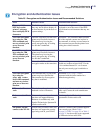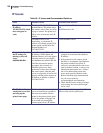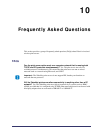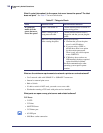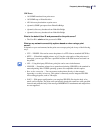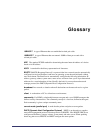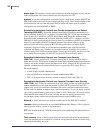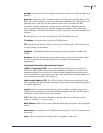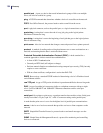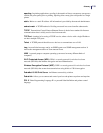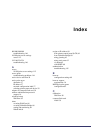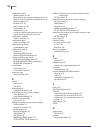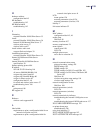
Glossary
152
P1043301-005 11/21/13
delete bytes This number is used to remove characters from the beginning of every job sent
to the logical printer. The value for delete bytes can range from 0 to 255.
dynamic A dynamic configuration, as the name implies, means that it changes. BOOTP and
DHCP offer time-based leases for the configurations they assign. Their changes depend on the
time-based lease, and how often the printer itself is offline and online again. A dynamic
configuration can include BOOTP or DHCP.
Extensible Authentication Protocol over Flexible Authentication via Secure
Tunneling (EAP-FAST) Extensible Authentication Protocol-Flexible Authentication via
Secure Tunneling (EAP-FAST) is a publicly accessible IEEE 802.1X EAP type developed by
Cisco Systems. It is available as an IETF informational draft. Extensible Authentication
Protocol-Flexible Authentication via Secure Tunneling (EAP-FAST) is a publicly accessible
IEEE 802.1X EAP type developed by Cisco Systems. It is available as an IETF informational
draft. Cisco developed EAP-FAST to support customers who cannot enforce a strong
password policy and wish to deploy an 802.1X EAP type that does not require digital
certificates, supports a variety of user and password database types, supports password
expiration and change, and is flexible, easy to deploy, and easy to manage. For example, a
customer using Cisco LEAP who cannot enforce a strong password policy and does not want
to use certificates can migrate to EAP-FAST for protection from dictionary attacks.
Extensible Authentication Protocol over Transport Layer Security
(EAP-TLS) Second generation Wi-Fi security. Current Wi-Fi security standards (802.1x)
define the use of the TLS protocol encapsulated within the Extensible Authentication Protocol
(EAP) as one of the strongest security mechanisms for Wi-Fi. Using EAP-TLS provides well-
regarded, standards-based security between an access point and a Wi-Fi client. This is a
Microsoft standard.
• A form of 802.1X (EAP) authentication
• Uses client and server certificates for mutual authentication (PKI)
• TLS 1.0 (Transport Layer Security) is based on Secure Socket Layer (SSL) 3.0
Extensible Authentication Protocol over Tunneled Transport Layer Security
(EAP-TTLS) EAP-TTLS is an extension of EAP-TLS which provides for certificate-based,
mutual authentication of the client and network. Unlike EAP-TLS, however, EAP-TTLS
requires only server-side certificates, eliminating the need to configure certificates for each
WLAN client. In addition, it supports legacy password protocols, so you can deploy it against
your existing authentication system (such as tokens or Active Directories.) It securely tunnels
client authentication within TLS records, ensuring that the user remains anonymous to
eavesdroppers on the wireless link and the entire network to the RADIUS server.
Ethernet A widely used local area network system based on the IEEE 802.3 standard.
firmware Software routines that are stored in ROM (Read Only Memory). This is typically
part of a device, such as a printer or any print server.
FTP File Transfer Protocol, a TCP/IP-related protocol for transferring files between devices
on a network.
Flash memory A type of memory that allows read-and-write operations, but permanently
stores data when the power is turned off. Useful for storing firmware because it can be easily
updated by downloading new code.




